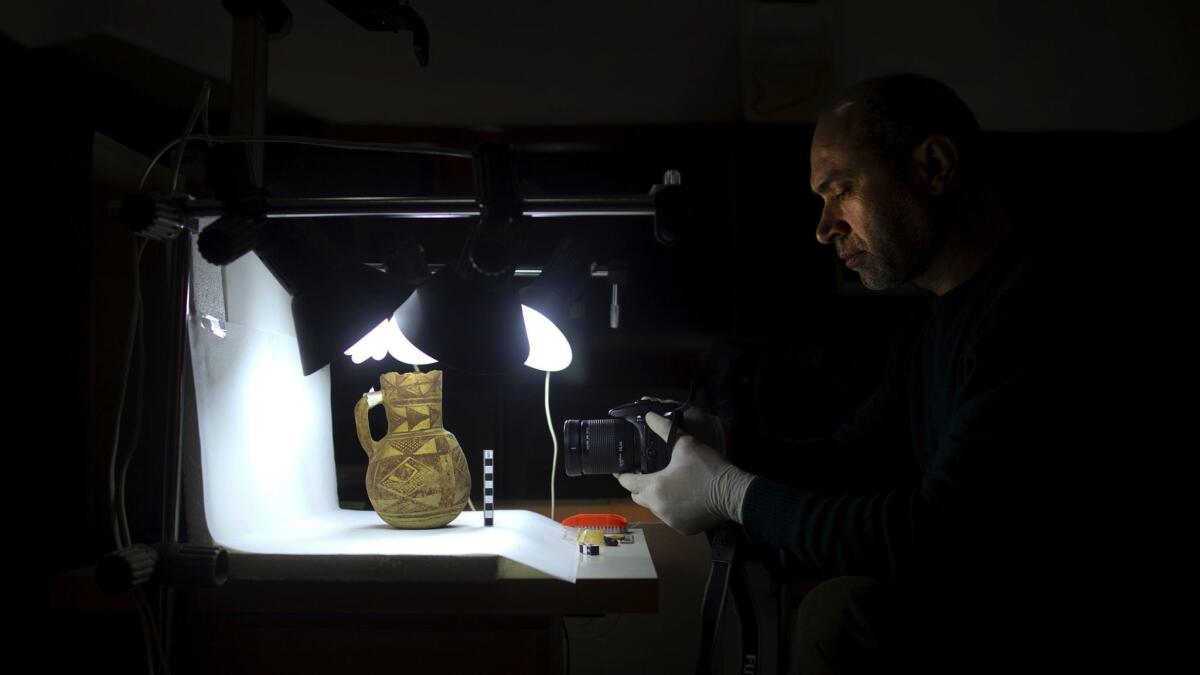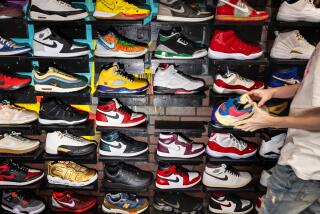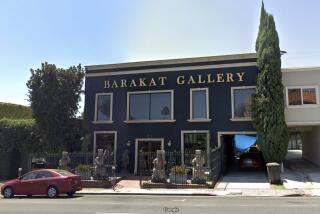After Islamic State institutionalized looting in Syria, the market for fake antiquities is booming

Reporting from Damascus, Syria â The Bible, its pages browned and frayed at their edges, seemed liable to crumble at the slightest touch.
One page had the faded traces of a drawing of the Virgin Mary, its spaces filled in with golden particles tinged green by oxidization, set opposite neat lines of Aramaic script. Elegant drawings of religious iconography adorned the margins, adding to the artifactâs elegance.
There was just one problem.
âItâs a fake,â said Yarub Abdullah, director of the National Museum in Damascus, closing the Bible suddenly with a nonchalant flip of his hand. He looked with distaste at his fingers, smudged by the pages he had just handled.
âJust smell the page; they got that color by dunking it in chocolate, something like that.â
The almost six-year crisis in Syria, which has killed hundreds of thousands and made the countryâs name a byword for suffering, has not spared its archaeological riches.
The elegant stone arches of Aleppoâs market places, where merchants plied their wares for more than half a millennium, are singed black with the fire of ordnance from engagements past. Krak de Chevaliers, a Crusader castle in Homs province, bears the scars of the modern weaponry its 13th century walls were never designed to withstand.
And then there is Palmyra: Its towering monuments, which awed explorers into naming the city âVenice of the Sands,â were vandalized by Islamic State militants, even as its sites were looted, their contents sold to purveyors in black markets all over the world. Other ancient sites around the country have fared little better; unauthorized excavations, conducted by people with little regard for the niceties of archaeological exploration, have sprouted across Syria. Anything they scoop up is spirited away to Lebanon, Jordan or Turkey.
But that appetite for Syriaâs artifacts has also created an opening for counterfeits.
âIn the last year, weâve caught thousands of pieces. We noticed that the percentage of fakes has risen up from 30 to 40% to over 70%,â said Maamoun Abdulkarim, Syriaâs director-general of antiquities and museums.
âBibles, coins, statues ⌠the buyer wants a certain model of artifact. The seller doesnât have it, so you have workshops that produce fakes.â
On his laptop, Abdulkarim played a video depicting an open-air workshop, which he said was in the town of Khan Al-Subul in the rebel-held province of Idlib. Men, their hands covered in white dust, sit cross-legged on the ground, carving delicate patterns on pieces of stone.
Off to the side, one worker washes down a column head with a wet sponge. The rivulets of liquid work their way down the stoneâs surface, leaving a dark sediment that would give it the appearance of age, according to Abdulkarim.
âAlmost every week weâre catching things like these. The police now get annoyed at the word âcounterfeitâ: Theyâre proud they managed to catch archaeological items, then theyâre told itâs not genuine,â he said turning to a stone statue of an eagle sternly keeping watch in front of his office door.
It too was a fake, but, he explained with a tired smile, âwhen they brought it to me, I liked it and I kept it here.â
Part of the problem, explained Abdulkarim, was the perception that âwhatever was coming out of Syria was realâ as the breakdown in government control has led to a tremendous increase in looting.
When Islamic State took over large swaths of territory in the summer of 2014, it institutionalized the practice, according to Amr Azm, a former Syrian antiquities official who was in charge of the science and conservation labs in the country.
âThey started issuing licenses, collecting taxes on excavation,â Azm said in a phone interview Monday.
âThen they really got involved in selling it, so you see them bring in contractors.â
But many of those areas didnât hold the high-value artifacts prized by collectors, fueling a rise in an industry of counterfeit antiquities.
And not all fakes were as obvious as Abdulkarimâs new office ornament, cautioned Azm.
Some are made from pieces of damaged mosaics, reassembled into designs that mimic more valuable pieces. âThere are some very good fakers, especially in mosaicsâŚ. These workshops are mostly in the area around Idlib, some in Damascus. Theyâre so good they use ancient stones and reset them to get a higher value,â he said.
âUnless they make a stylistic error or a technical error, you wonât tell itâs a fake. If you look at the stone, test the residue, it will all be ancient.â
Some dealers will even bury the counterfeit artifact â another trick to fool potential buyers into thinking the item is authentic. They then either sell the rights to the site so buyers can send someone to dig it out, or have them pay a premium three times the artifactâs value for delivery across the border or beyond.
Another trick: including forged papers with an item to make it seem like it was smuggled from another country. To avoid scrutiny until a suitably discreet buyer is found, some counterfeited artifacts are taken to free ports, where they can be stored tax free for years before being put to market. Last week, Swiss authorities in Geneva impounded artifacts taken from Syria in 2009, according to Agence France-Presse.
In the long run, the rise in fakes could discourage looting and counterfeiting in Syria, said Azm.
âOne of the ways to break the grip of a looting cycle is to flood the market with fakes, so that confidence in the material coming out of Syria crashes.â
Itâs a positive spin on a situation that Abdullah, the director of Damascusâ museum, is unlikely to share.
His assistant brought out a white box and lifted out a bubble-wrapped object, placing it on a brass tray etched with intricate patterns. As she removed the wrapping with a touch of theater, Abdullahâs office filled with a musty smell. Inside was a book with a cover of buffalo hair from which emerged a spooky-looking cherubâs face made out of bronze.
âLook at this, the pages are made from cement bags, treated with glue and some perfumeâŚ. People get tricked by this stuff,â he said.
âWeâre really getting fed up. There are so many fakes to examine, it keeps us from finishing our real work on preservation of the real items.â
Abdullah stole another look at his fingers, and was annoyed to see them once more smudged with residue from the counterfeit book.
âTake it away, take it away,â he said to his assistant standing nearby.
He grabbed a tissue, doused it with rubbing alcohol and started furiously rubbing at his fingers.
Bulos is a special correspondent.
ALSO
Two blasts at Baghdad market kill 28, wound 54
Taiwanâs president calls China a âthreat,â predicts turbulent 2017
United Nations backs Russian-Turkish peace efforts in Syria as truce falters
More to Read
Sign up for Essential California
The most important California stories and recommendations in your inbox every morning.
You may occasionally receive promotional content from the Los Angeles Times.











